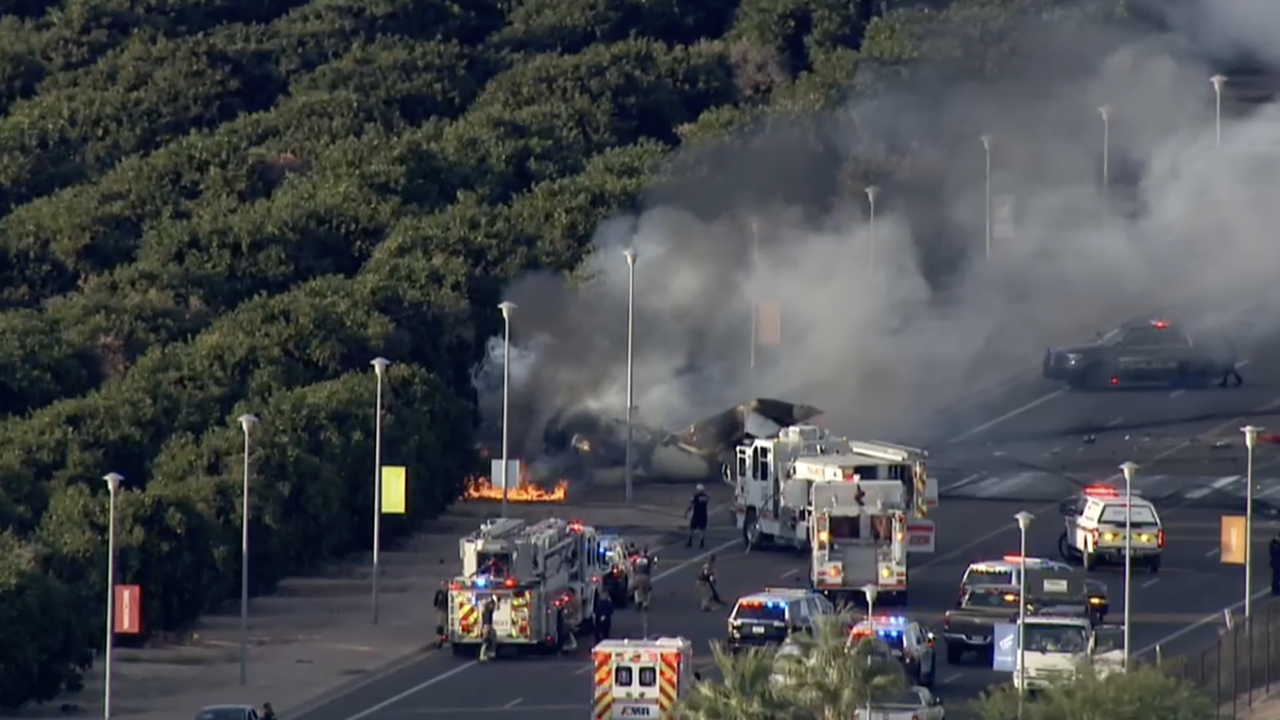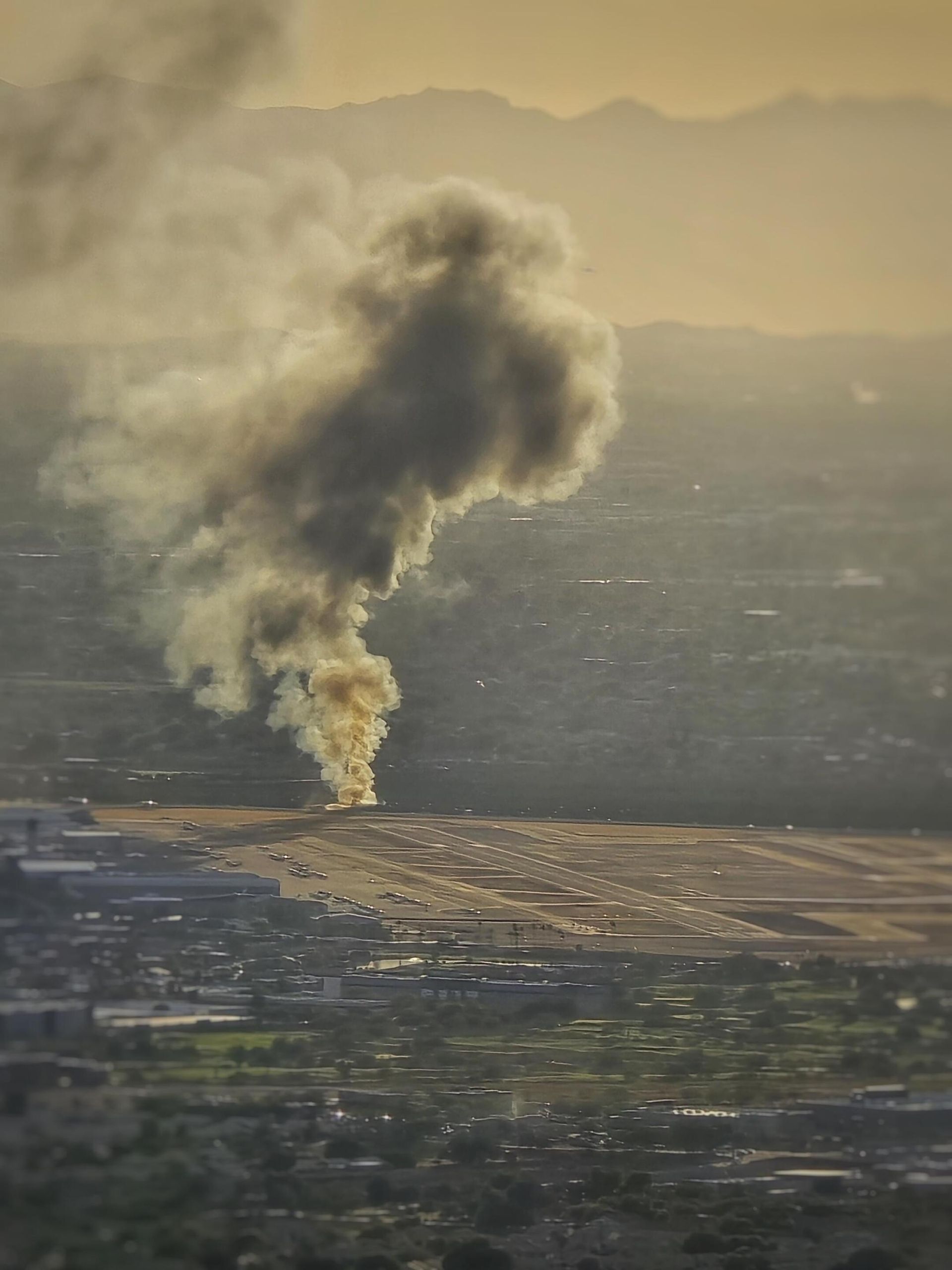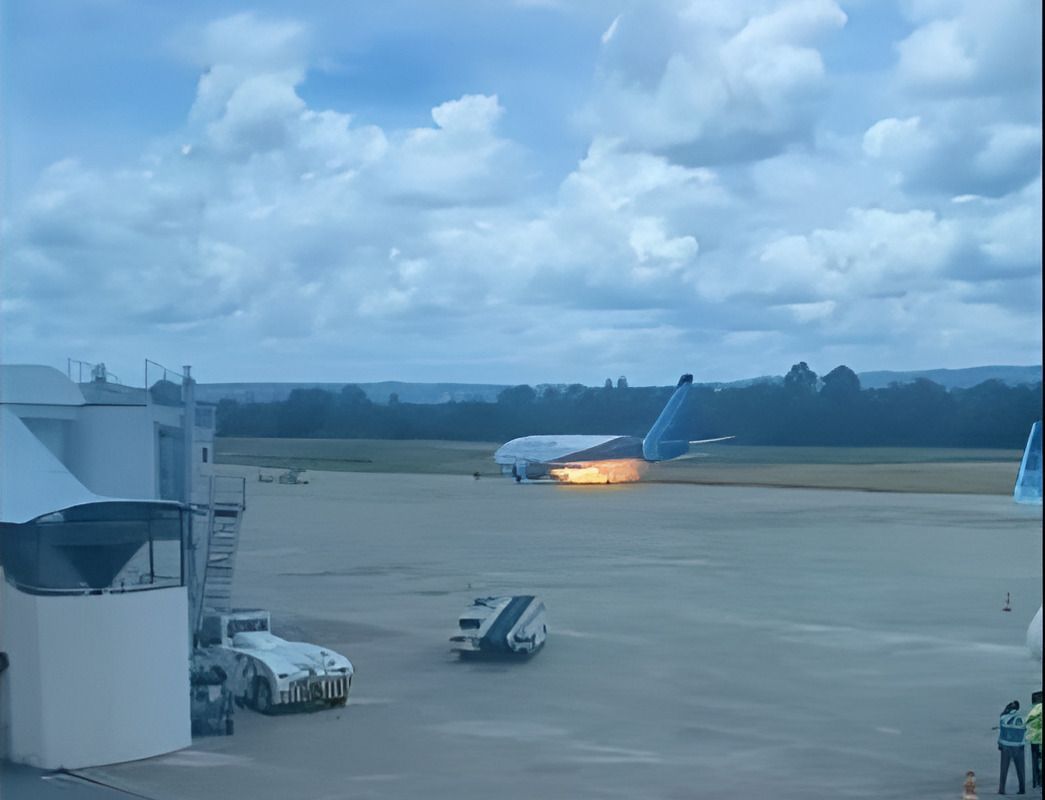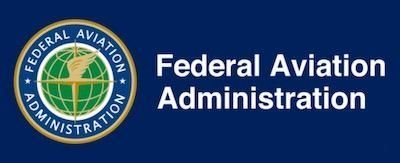ARFF Daily News
Published on:
Wednesday the 6th of November, 2024
Five dead after plane crash near Falcon Field in Mesa
Aerial footage showed the plane on fire and a damaged car that was involved
By: abc15.com staff
MESA, AZ — Mesa officials say five people have died after a plane crash near Falcon Field on Tuesday afternoon in Mesa.
Police say the crash happened near Greenfield and McKellips roads.
Aerial footage showed the plane of fire and at least one damaged vehicle that was involved.
As of late Tuesday night, one lane in each direction was reopened on McKellips Road. Greenfield Road is closed northbound at Brown and southbound at McDowell Road. Officials advise drivers to avoid the area.
ABC15 viewer Terri Fairfield was hiking at Usery Mountain Regional Park when she saw the smoke minutes after the crash.
It is unknown what led to the crash.
The victims have not been identified.
https://www.kgun9.com/news/state/crews-on-scene-of-plane-crash-near-falcon-field-in-mesa


Trigana Air 737-500 Evacuated at Sentani Airport After Engine Fire
A Trigana Air Boeing 737-500 preparing to depart to Wamena, Highland Papua was emergency evacuated after an engine fire at Sentani Airport, Jayapura, Papua.
A Trigana Air Boeing 737-500 bound for Wamena, Highland Papua was emergency evacuated after an engine fire at Sentani Airport, Jayapura, Papua
Trigana Air flight IL237, operated by a Boeing 737-500, was preparing to depart from Sentani Airport (DJJ). The aircraft was conducting a scheduled service to Wamena Airport (WMX), Highland Papua with 121 passengers on board.
As the flight prepared to taxi on the hardstanding area, flames were seen emitting from the aircraft’s left hand engine.
As a result, flight crew aborted the taxi procedure and the aircraft was disembarked via emergency escape exits and slides.
Video footage which has surfaced on the social media shows large numbers of passengers had disembarked onto the wing area via over wing exits. Many then completed the disembarkation by stepping down from the wing trailing edge to the ground.
According to a brief statement issued by a Sentani Airport spokesperson, a small number of passengers sustained minor injuries as a result of attempting to exit the aircraft.
It is understood that those suffering minor injuries were then treated at an airport health facility.
The ground incident will now become the subject of an investigation by the National Transportation Safety Committee (NTSC).
Aircraft Details
The aircraft conducting the IL237 regional service to Wamena Airport was a Boeing 737-500, registered PK-YSC. This is a 32.6-year-old narrowbody aircraft belonging to the carrier Trigana Air. It has been an operational service with the airline since September 2020.
Prior to its present service, the aircraft has passed through the hands of several airline operators. Notably, it was originally operated by LOT Polish Airlines from its initial delivery from the factory in May 1992. It then saw service with SAS Scandinavian airlines from April 1993.
Trigana Air is an Indonesian airline, headquartered in Jakarta. The carrier operates to around 20 destinations throughout Indonesia, with a particular focus on Western New Guinea.
https://avsn.co.uk/trigana-air-737-500-evacuated-at-sentani-airport-after-engine-fire/


IAFF announces webinars on future of protective gear
International Association of Fire Fighters members can participate in two upcoming webinars designed to address the risks and hazards associated with fire fighter protective gear.
International Association of Fire Fighters members can participate in two upcoming webinars designed to address the risks and hazards associated with fire fighter protective gear.
The webinars, scheduled for Nov. 7 at 3 p.m. ET and Nov. 8 at 12 p.m. ET, aim to identify and better understand these risks and explore how future improvements can reduce injury and fatality rates among fire fighters and emergency medical workers.
“These webinars are a vital opportunity for the IAFF to gather input from our members, whether they are from small Locals, large Locals, or anywhere in between,” said Sean DeCrane, the IAFF’s Director of Health and Safety Operational Services. “This is an opportunity for input as our union works to create the roadmap for the next generation of fire fighter PPE.”
The IAFF encourages all members to participate and share their insights. The feedback gathered will be instrumental in shaping the future of fire fighter protective gear, ensuring that it meets the highest standards of safety and effectiveness.

Advisory Circulars Update Notification
The following advisory circular has recently been added/updated.
- 150/5345-44L - Specification for Runway and Taxiway Signs
https://www.faa.gov/regulations_policies/advisory_circulars/index.cfm/go/document.information/documentID/1043259

NTSB Prelim: Cirrus Design Corp SR22
(Pilot) Identified A Potential Landing Area And Pulled The Cirrus Airframe Parachute System, But The Parachute Did Not Deploy
Location: Bakersfield, CA Accident Number: WPR25LA001
Date & Time: October 2, 2024, 13:47 Local Registration: N752B
Aircraft: Cirrus Design Corp SR22 Injuries: 1 Serious
Flight Conducted Under: Part 91: General aviation - Personal
On October 2, 2024, about 1347 Pacific daylight time, a Cirrus SR22, N752B, was substantially damaged when it was involved in an accident near Bakersfield, California. The pilot was seriously injured. The airplane was operated as a Title 14 Code of Federal Regulations Part 91 personal flight.
According to the pilot, he refueled the airplane and departed Tulare, California, with about 75 gallons of 100 low lead aviation grade gasoline onboard and the low boost pump on. After departure, he climbed to 13,000 ft mean sea level (msl). When the pilot turned the low boost pump off the engine immediately started to run rough and began misfiring. The pilot then declared an emergency and the engine started to lose power. He attempted to run the engine on the high boost pump, which reduced the engine roughness; however, he was unsuccessful in restoring engine power.
At 1,200 ft msl, he identified a potential landing area and pulled the Cirrus Airframe Parachute System, but the parachute did not deploy. After the pilot pulled the cable a second time the parachute deployed, and the airplane leveled out. The pilot did not recall any further details from his recount of the accident.
Surveillance video captured the airplane’s final 4 seconds of flight, which showed the airplane’s shadow as it traversed a road. The airplane and its parachute came into view in the remaining two seconds of video, which showed it impact the ground in a nose low and right wing low attitude. The parachute then settled near the main wreckage.
Postaccident examination of the airplane revealed that fuselage and right wing was substantially damaged. The airplane has been retained for further examination.
FMI: www.ntsb.gov

Today in History
38 Years ago today: On 6 November 1986 A British International Helicopters Boeing Vertol BV234LR Chinook crashed at sea while on approach to Sumburgh, Shetland, United Kingdom, killing 45 occupants; 2 survived the accident.
Date: Thursday 6 November 1986
Time: 11:31 LT
Type: Boeing Vertol 234LR
Owner/operator: British International Helicopters
Registration: G-BWFC
MSN: MJ004
Year of manufacture: 1981
Total airframe hrs: 7690 hours
Engine model: Lycoming ALL5512
Fatalities: Fatalities: 45 / Occupants: 47
Other fatalities: 0
Aircraft damage: Destroyed, written off
Category: Accident
Location: North Sea, 2.5 mi E of Sumburgh - United Kingdom
Phase: Approach
Nature: Offshore
Departure airport: Brent Charlie Offshore Installation
Destination airport: Sumburgh, Shetland (LSI/EGPB)
Investigating agency: AAIB
Confidence Rating: Accident investigation report completed and information captured
Narrative:
A British International Helicopters Boeing Vertol BV234LR Chinook crashed at sea while on approach to Sumburgh, Shetland, United Kingdom, killing 45 occupants; 2 survived the accident.
Crashed into the North Sea when the forward transmission spiral bevel ring gear failed. This caused the rotor synchronisation to be lost and the aft rotors cut through the aircraft as it broke up in mid air. The underlying causes were the inadequacy of a previously accepted test program and the failure of a stringent inspection programme.
Only two of the 47 POB (44 passengers and 3 crew) survived.
The helicopter was normally based at Aberdeen Airport but had been based at Sumburgh Airport since 3 November 1986 to operate a shuttle service from the Shell Brent field in the East Shetland Basin. On 6 November the first flight was delayed due to an oil leak from an engine gearbox that was soon rectified and the aircraft left Sumburgh at 08:58 with 40 passengers for the Brent Field. The aircraft visited three platforms with exchanges of freight and passengers then departed Brent Platform C at 10:22 with 44 passengers on board for return to Sumburgh Airport. It transited at a height of 2,500 feet, and as it approached Sumburgh it was cleared to descend to 1,000 feet. Reporting 4.5 miles from the airfield, the controller cleared it to land on helicopter runway 24. Nothing else was heard.
The crew noticed an increased noise level in the flightdeck followed by a bang. Despite applying full cyclic pitch control the aircraft did not respond and nose-dived towards the sea from a height of 150 feet (50 m). The helicopter hit the sea, broke up and sank. A Coastguard search and rescue helicopter which had just departed Sumburgh Airport reported liferafts in the sea. It then observed a survivor clinging to a substantial piece of wreckage. While they winched the man on board another survivor was noted amongst the floating bodies. With no signs of other survivors the Coastguard helicopter flew the survivors to Lerwick for transfer to hospital.
The AAIB made three safety recommendations:
1) Certification procedures be reviewed so that all modifications to vital components are adequately scrutinised and tested before approval and more closely monitored after their introduction into service.
2) The Civil Aviation Authority should report on the progress that has been made towards the early incorporation of a specification for suitable condition monitoring systems into airworthiness requirements for helicopters and indicate the time scale and scope of likely developments.
3) Requirements relating to the ADELT (Automatically Deployable Location Transmitter) equipment, including location, crashworthiness, protection and power supplied, be review.ed in the light of the accident. (The beacon did not operate due to impact damage to the aft part of the aircraft)

Mailing Address
Subscribe to our newsletter
Contact Us
We will get back to you as soon as possible.
Please try again later.
